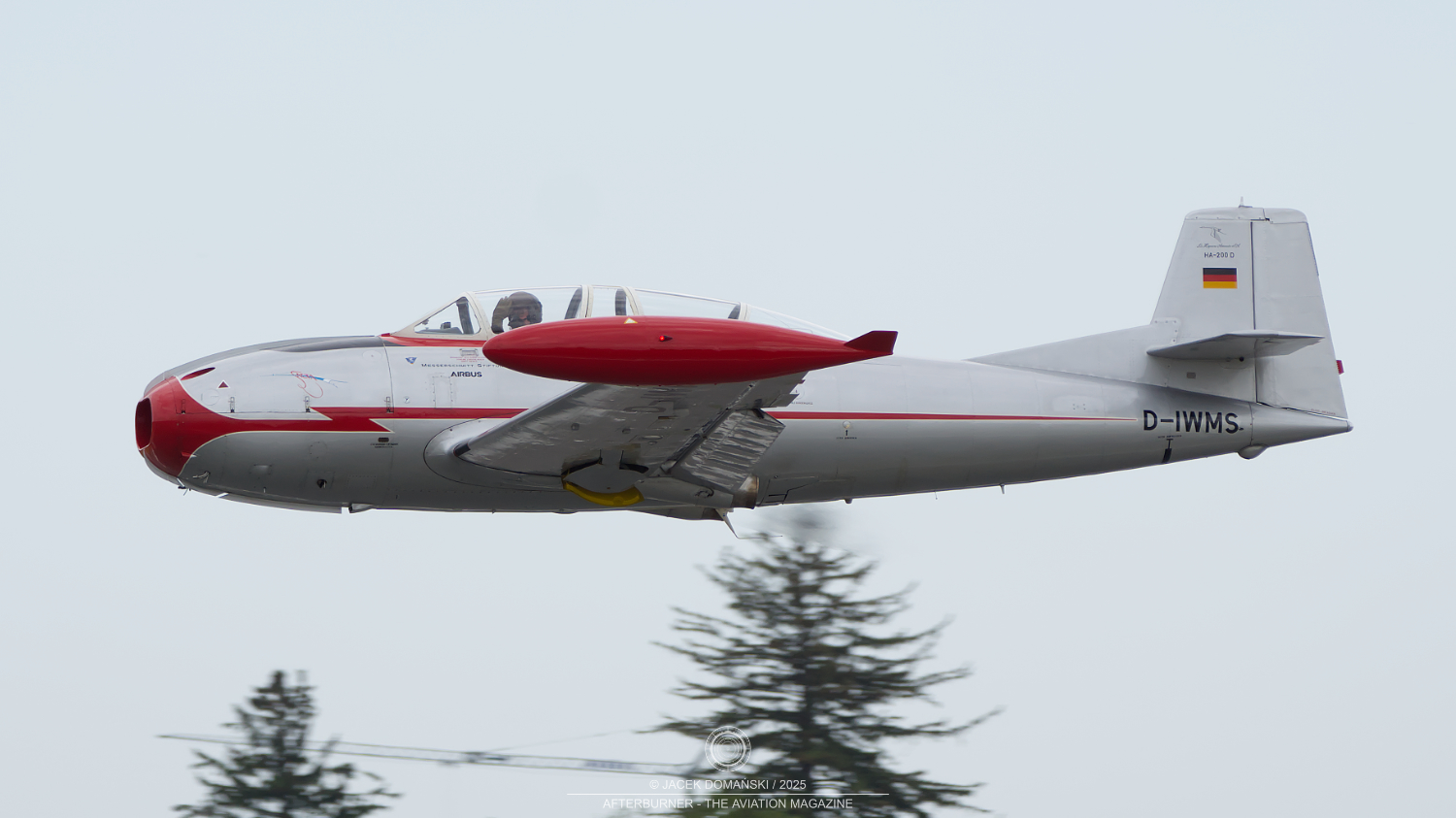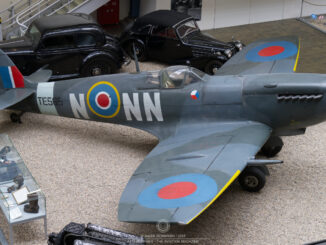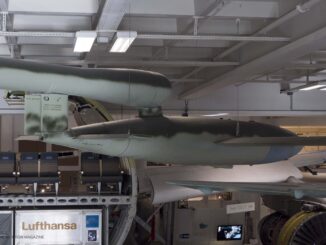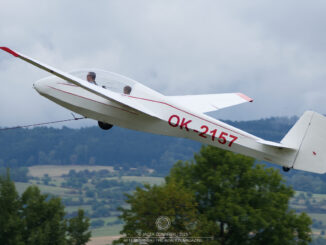 Hispano HA-200D Saeta (c/n 20/73, formerly in service with Ejército del Aire / the Spanish Air Force, D-IWMS of Messerschmitt Stiftung), departure from Neuburg air base, July 2025.
Hispano HA-200D Saeta (c/n 20/73, formerly in service with Ejército del Aire / the Spanish Air Force, D-IWMS of Messerschmitt Stiftung), departure from Neuburg air base, July 2025.
In the late 1940s, with the beginning of the jet era, not only the global powers but also many other countries began to work on their own jet aircraft. Shortly after, those developments resulted in several interesting designs, such as Dassault Ouragan and Mystère, Saab 21R and 29 Tunnan, or FMA IAe 33 Pulqui II.
Spain was not an exception from the rule and, in the early 1950s, decided to join the ´jet club´. Interesting fact was that the country´s development of a jet aircraft was led by Willy Messerschmitt, the famous German aviation designer who created several aeroplanes used by the Third Reich during the Second World War.
Although, after the war, Messerschmitt was tried by denazification court, his punishment did not last long. Yet in 1948, he was released from prison and again became the head of the Messerschmitt company. However, at that time Germany was forbidden to make any aircraft and therefore the company focused on manufacturing small cars, machines and construction materials.
In 1951, Willy Messerschmitt moved to Francoist Span and began to work for state-owned aviation plant, Hispano Aviación.
The company, located in Tablada (Triana district), previously was a part of Hispano-Suiza group but after the Spanish Civil War was taken over by the Nationalist government. At that time, it already manufactured one of Messerschmitt´s designs, the Spanish licence variant of Bf 109G, locally designated HA-1109.
A piston-powered military trainer named HA-100 Triana was the first Messerschmitt´s development for Hispano company. However, at that time Spain had no suitable engine for such type of aircraft and finally the HA-100 prototype had to be equipped with Wright R-1300 radial engine. Although the flight tests of the new aircraft were successful, purchasing of the sufficient number of the R-1300 powerplants became an unsolvable issue.
In consequence, with Willy Messerschmitt being among the strong supporters of such decision, the HA-100 project was abandoned and the development team focused all efforts on new design, a two-seat jet advanced trainer.
The new aircraft was created by Messerschmitt, Juan de la Cruz Martín-Albo and Rafael Rubio Elola. They, to a large extent, implemented into the first Spanish jet elements and solutions previously used with the HA-100. The aeroplane was powered by a French-designed Turbomeca Marboré II engine, produced locally under licence.
On 12th August 1955, the first Spanish-developed jet aircraft performed its maiden flight, with Major Fernando de Juan Valiente at its controls.
Although the new aircraft, officially designated HA-200 Saeta (English: arrow), was warm welcomed by the Spanish government and the air force, it took a few more years until the trainer officially entered service with Ejército del Aire. The pre-production series of ten aircraft was ordered in 1957, followed by the first production batch of thirty HA-200A jets in 1959, the year Willy Messerschmitt returned to Germany.
Officially, the HA-200 entered operational service in the late 1962. Although the Spanish government made several efforts to spark international intertest in the new trainer, no great success was received in this regard. The Egyptian Air Force became the only foreign customer to purchase the aircraft with delivery of ten aeroplanes from the initial series, designated HA-200B, and another ninety examples built in the country under licence and known as Helwan Al-Kahira.
In 1963, the Spanish Air Force ordered another batch of fifty-five aircraft, in an upgraded variant designated HA-200D. Most of those aeroplanes were later converted into HA-200E Super Saeta, receiving new Marboré IV engines, modernised avionics and limited ground attack capabilities.
In 1970, Hispano successfully developed a single-seat, ground attack variant of the aircraft, designated HA-220E. The Spanish Air Force ordered twenty-five examples of the aeroplane. In later years, some of them were converted into photo-reconnaissance variant, military designated AR.10C.
During the Western Sahara Wars in the 1970s, the Spanish Air Force used the HA-200 against the Polisario Front forces. It was, most probably, the only combat mission flew by that type of aircraft, as there is no further evidence of any operational missions with the Egyptian Air Force. The HA-200 Saeta and its derivatives remained in active service until the early 1980s.
The HA-200D ´20/73´ was manufactured in 1966 and then operated by the Spanish Air Force until 1981. In 1995, it was purchased by Messerschmitt Stiftung (Messerschmitt Foundation) in Manching, Germany. After three years spent on some necessary restoration works and repainting, the HA-200 Saeta took into the skies again and since then is part of Flugmuseum Messerschmitt aircraft collection.



